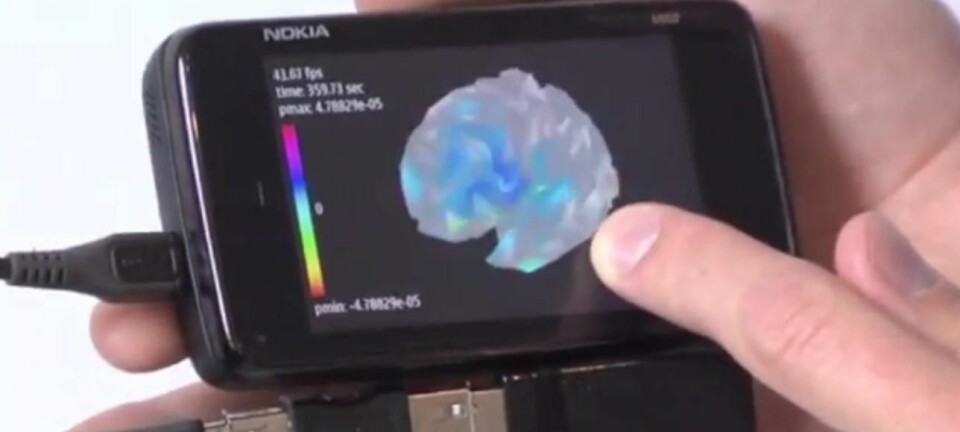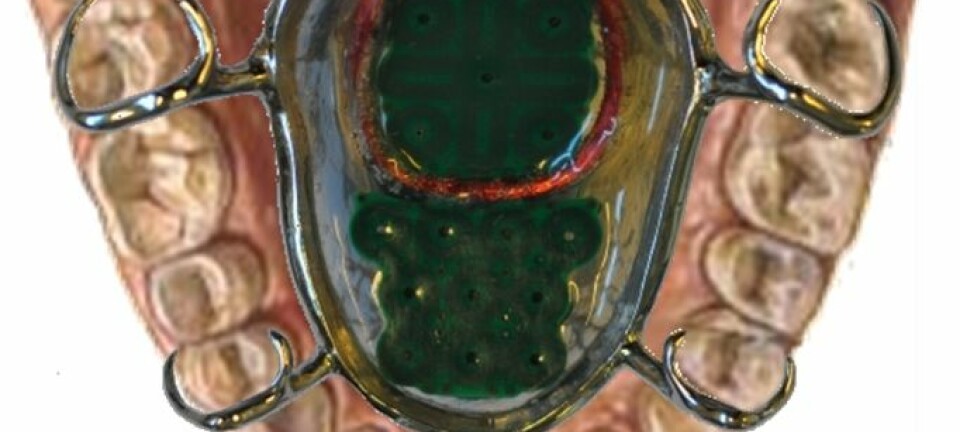Texting with your eyes
You will soon be able to control your smartphone screen and write text messages using your eyes.
Soon you won’t have to use your fingers when operating your smartphone. Using new technology developed in Denmark, your smartphone reacts according to where your eyes focus on its screen. This video shows how the technology works.
The new technology enables you to control figures in computer games using your eyes. You can write text messages solely by focusing on the letters you wish to write. And if you’re reading a long text on the screen, the text will scroll automatically, depending on where your eyes focus.
“When you’re reading a text it’s quite fun that you don’t notice the screen scrolling,” says Sune Alstrup, a PhD Fellow at the IT University of Copenhagen, who researches eye-tracking as a method for analysing human-computer interaction and communication; he is co-inventor of the new technology.
Cheap technology
The new technology can become successful because it is very stable – and cheap. The invention is based on eye-tracking technology, which enables a computer to decode where a person’s eyes focus on the computer screen.
There are numerous possibilities with this technology. And it’s so new that we hardly know which applications are the most relevant.
“A commercial eye-tracking device costs up to €25,000,” says the researcher. “Ours is based on a camera that costs €10-100. The camera used in the video cost €13.”
Alstrup and his colleagues are able to make cheap eye-tracking equipment because they have developed sophisticated software that can compensate for the expensive hardware in traditional eye-trackers.
“But it works like most eye-trackers,” he says.
The Danish developers’ eye-tracker has three components:
• An infrared light-emitting diode (LED), which we can’t see, but which constantly shines into our eyes from the smartphone
• A camera that catches the reflection of the infrared light in our eyes
• Software that uses highly advanced algorithms to calculate, from the data generated by the camera, where our eyes are focused on the smartphone screen
Software is the inventors’ secret weapon
Two places in the eye reflect the eye-tracker’s infrared light:
• The pupil, which moves continually as you look at the screen
• The cornea, which doesn’t move
“The camera discerns the difference between the two reflections and this difference is sent to the software, which then calculates where your eyes are focused on the screen,” says Alstrup.
Good anti-theft device
The new technology has enormous potential. If it is used as an eye-tracker in a smartphone, only the owner can use the phone – which is an effective anti-theft device.
“And the technology means we can write text messages with our eyes,” says the researcher. “But many people don’t think this is possible.”
Spelling by eye
There are other ways to write texts than with a keyboard, where a fingertip presses on the smartphone screen.
One alternative is the programme Swype, where you run your finger over the various letters on the screen’s keyboard – which is easier and faster than pressing on the individual letters with 100 percent precision.
“Instead of waiting for you to press on letters, the smartphone decodes the letters your finger runs over and deciphers the word that is formed,” says Alstrup. “And it’s easy to imagine you can do this with your eyes – you look at ‘h’, then let your eyes run to ‘i’ and finally to ‘!’, and the smartphone decodes that as ‘hi!’. In this way, using your eyes to write a text is actually very easy.”
Ready to use in 2013
The developers expect to start collaborating with a suitable smartphone producer soon – and many producers are interested in the technology.
So far, Alstrup and his colleagues have only produced prototypes, as shown in the video, and which have only worked with 90 percent of people in tests. But the developers believe the technology will be so close to finalisation during 2012 that the first eye-tracking smartphones can be on the market in 2013.
Read the article in Danish at videnskab.dk
Translated by: Michael de Laine
External links
- Sune Alstrup's profile
- Senseye, which has developed the technology
- Swype, which has developed SMS technology where you can 'draw' your messages









